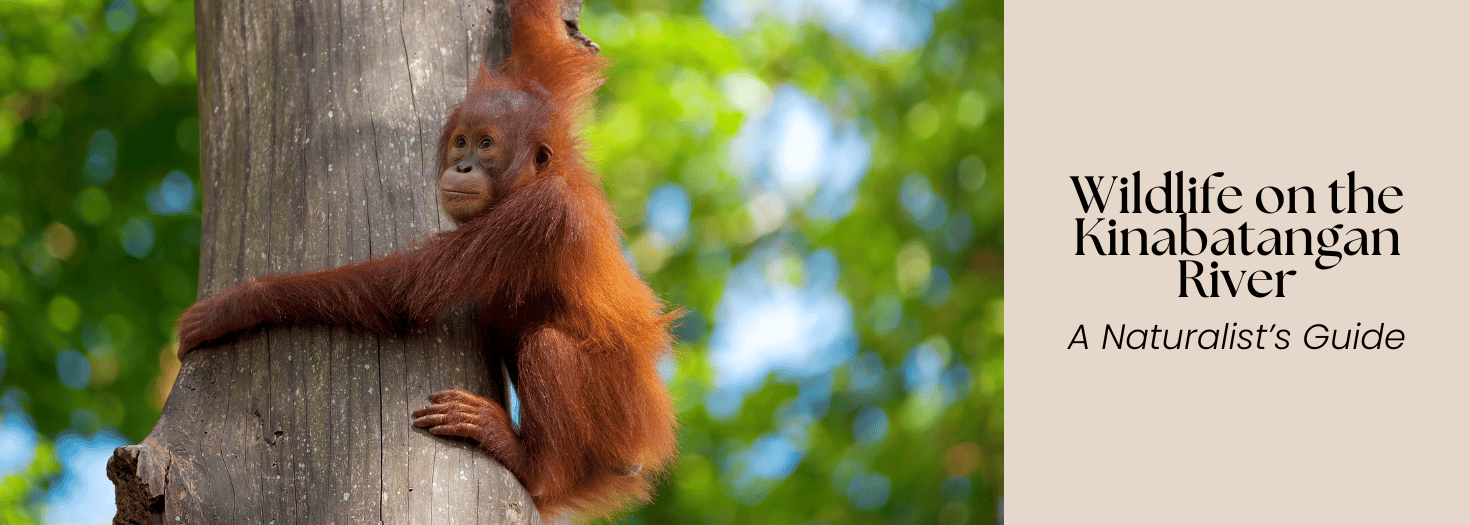Wildlife on the Kinabatangan River: A Naturalist’s Guide
Table of Contents
- The Kinabatangan River: Life Along the Banks
- Mammals: The River’s Showstoppers
- Avian Highlights: Feathered Gems of the River
- Reptiles and Amphibians: Cold-Blooded Residents
- Nightfall on the Kinabatangan: Nocturnal Wonders
- Conservation: Safeguarding a Wildlife Haven
- Wildlife on the Kinabatangan River Checklist
- Ways to See Wildlife on the Kinabatangan River with Destinology
- FAQs
If Borneo’s jungles could talk, they would speak first of the wildlife on the Kinabatangan River: a winding ribbon of water that threads through Sabah’s rainforest heart and cradles one of Southeast Asia’s most biodiverse ecosystems – one that’s alive with the calls of hornbills, the splash of proboscis monkeys, and the rustle of often unseen creatures.
The river pulses with life, and the surrounding forest is its stage. For anyone with a fascination for wildlife and a taste for adventure, cruising these waters grants access to one of nature’s most compelling dramas – every bend might reveal a rare sighting, or a moment worth holding your breath for.
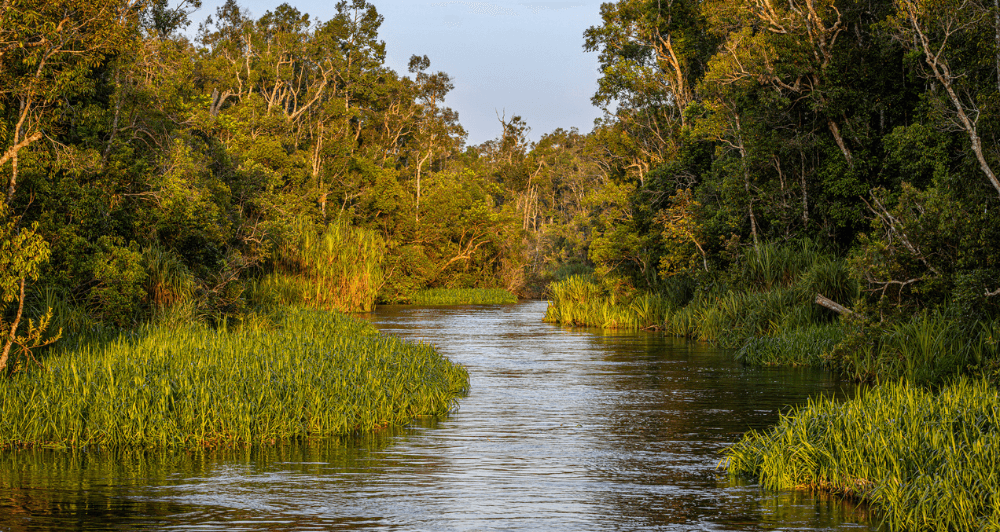
The Kinabatangan River: Life Along the Banks
Stretching some 560 kilometres, the Kinabatangan is Malaysia’s second-longest river and a UNESCO-listed Ramsar Wetland site. Its winding course cuts through mangrove fringes, swampy lowlands, and limestone cliffs, creating a mosaic of habitats. These varied environments are home to an astonishing diversity of life: over 250 bird species, countless mammals, reptiles, amphibians, and insects, each perfectly adapted to the rhythm of the river.
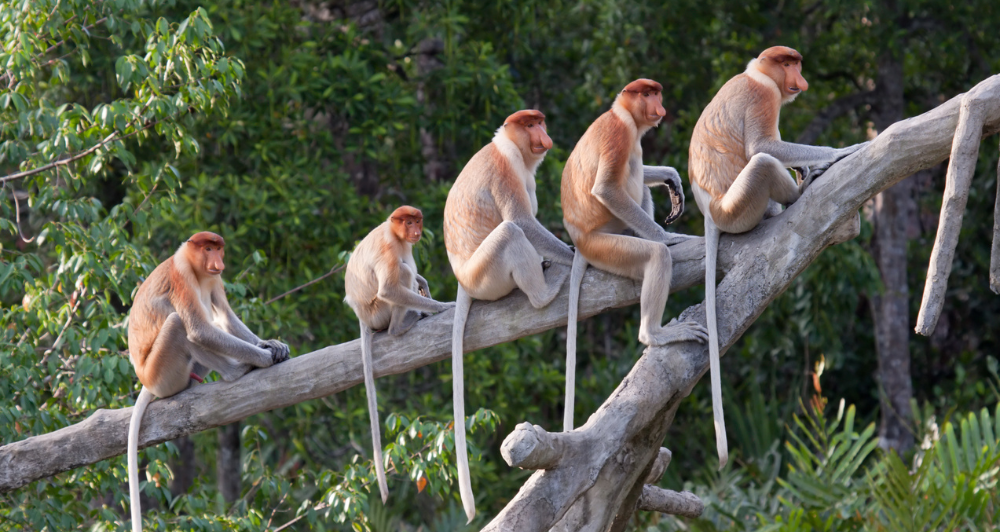
Mammals: The River’s Showstoppers
Proboscis Monkey
Few creatures are as instantly recognisable - or as entertaining - as Borneo’s proboscis monkeys. With their bulbous noses, pot-bellies, and enviable agility, they navigate their way effortlessly through the trees and swim across the river with surprising ease. Watching their social antics unfold along the riverbank is a highlight of any Kinabatangan River journey.
Bornean Orangutan
The forest canopy occasionally parts to reveal the world’s most iconic ape: the Bornean orangutan. Solitary yet remarkably expressive, these reddish-brown giants move gracefully through the trees, carrying their young and foraging for fruits and leaves to eat. Spotting one is naturally a very poignant reminder of the forest’s fragile beauty, and also highlights the importance of conserving its inhabitants.
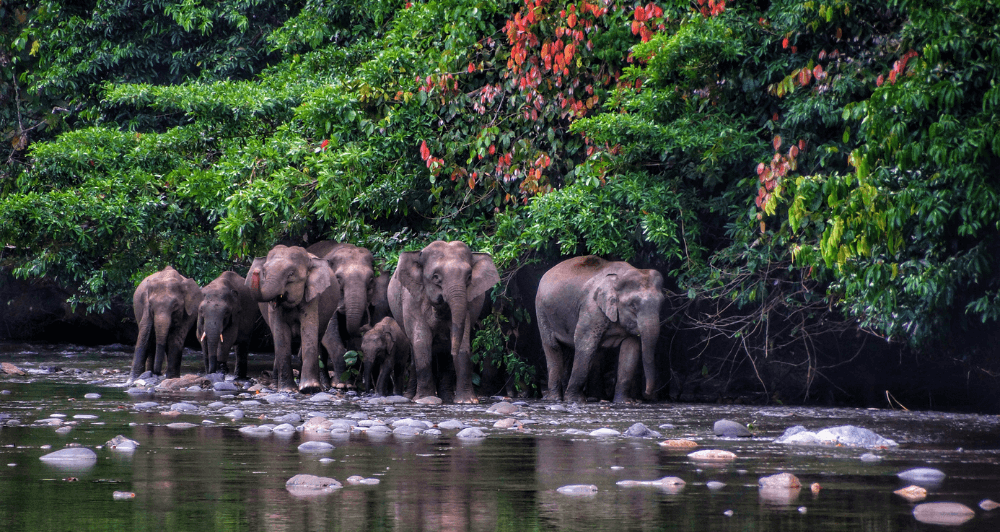
Borneo Pygmy Elephant
Smaller than their continental cousins but equally as captivating, Borneo’s petite pygmy elephants roam the riverbanks in close-knit family groups. Watching their playful interactions and gentle curiosity is a rare treat which often requires a little patience.
Sun Bear
The world’s smallest bear is a surprising sight among the dense forest undergrowth. Sun bears, with their distinct golden chest markings and nimble claws, are expert foragers, rooting for insects and climbing trees with astonishing speed. Catching even a fleeting glimpse is a delight for those paying close attention to the forest floor.
Clouded Leopard
Shy and nocturnal, the clouded leopard is a real master of camouflage - wildlife on the Kinabatangan River doesn't get more hidden than this. Its dappled coat blends seamlessly into the jungle shadows, making sightings sparse but incredibly special when they do occur. For wildlife experts, spotting this stealthy and silent predator is one of the river’s most sought-after experiences.
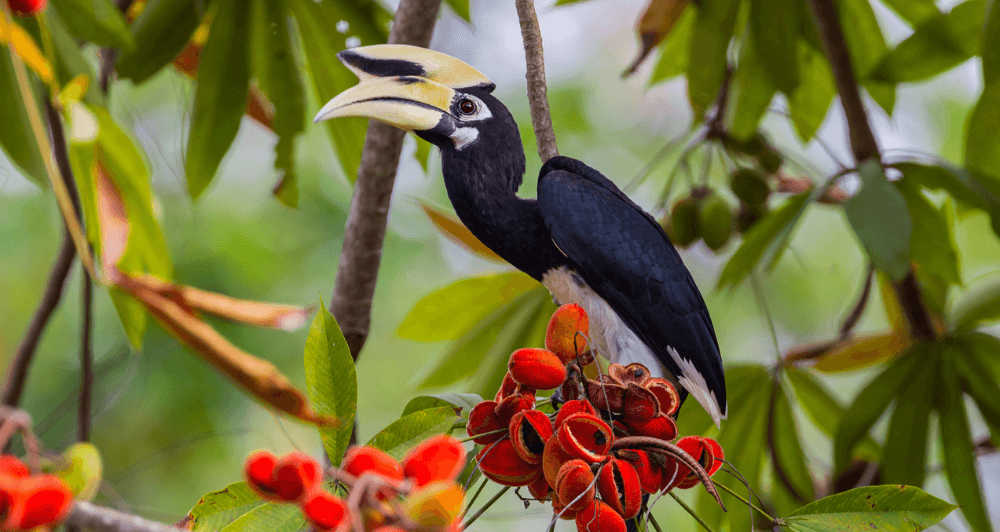
Avian Highlights: Feathered Gems of the River
For birdwatchers, the Kinabatangan is a treasure trove. Over 250 species fly, swoop, and call along its banks. The highlights include:
Rhinoceros Hornbill: Large, charismatic, and near impossible to miss due its iconic casque.
Oriental Pied Hornbill: Slightly smaller, but just as striking in flight with flashes of its white wings.
Bornean Bristlehead: A rare, jewel-like bird with a colourful red head.
Kingfishers and Egrets: Frequently spotted diving for fish in the river’s calm waters.
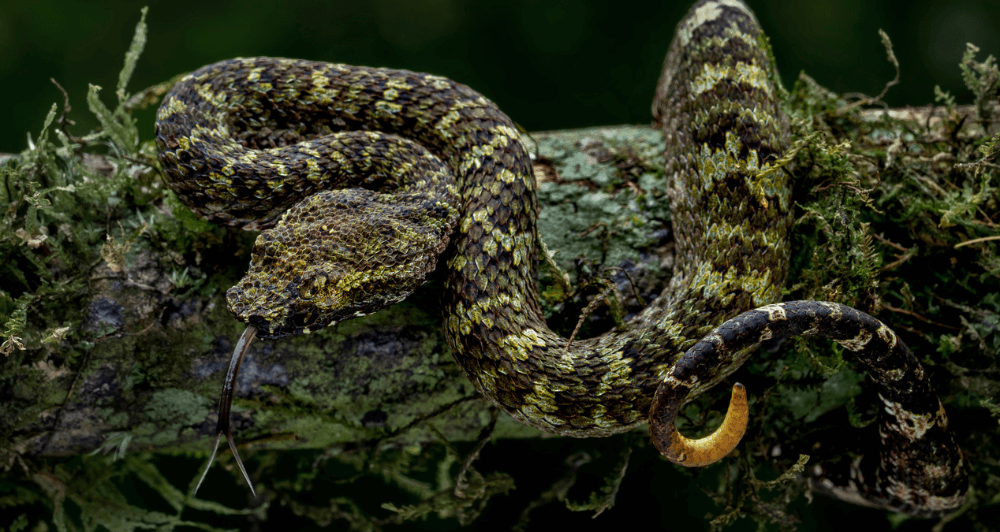
Reptiles and Amphibians: Cold-Blooded Residents
The Kinabatangan’s edges are also alive with reptiles and amphibians:
Saltwater Crocodile: The apex predator, often seen sunning itself and awaiting its prey on the riverbanks.
Asian Water Monitor: A large and impressive lizard that patrols the waterways.
Frogs: From the common Asian toad to the crested variety, these amphibians have a star role in the Kinabatangan River’s night time chorus.
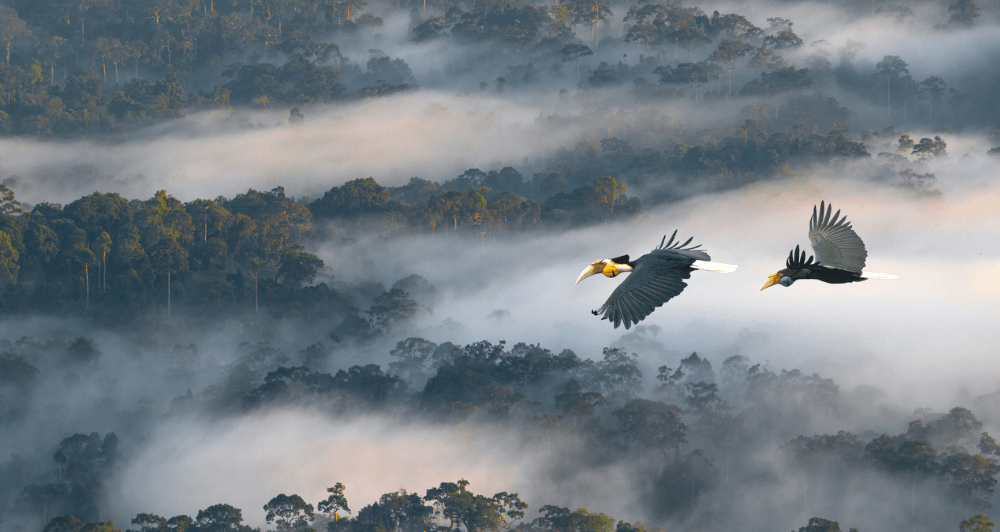
Nightfall on the Kinabatangan: Nocturnal Wonders
As the sun disappears below the canopy, the river takes on a whole new rhythm. Slow lorises (small primates that look a little like bushbabies), tarsiers, and other nocturnal creatures emerge from their habitats and hiding places. Compared to the day, a night time safari is a whole different world entirely. The sounds of the jungle become the soundtrack to unforgettable encounters.
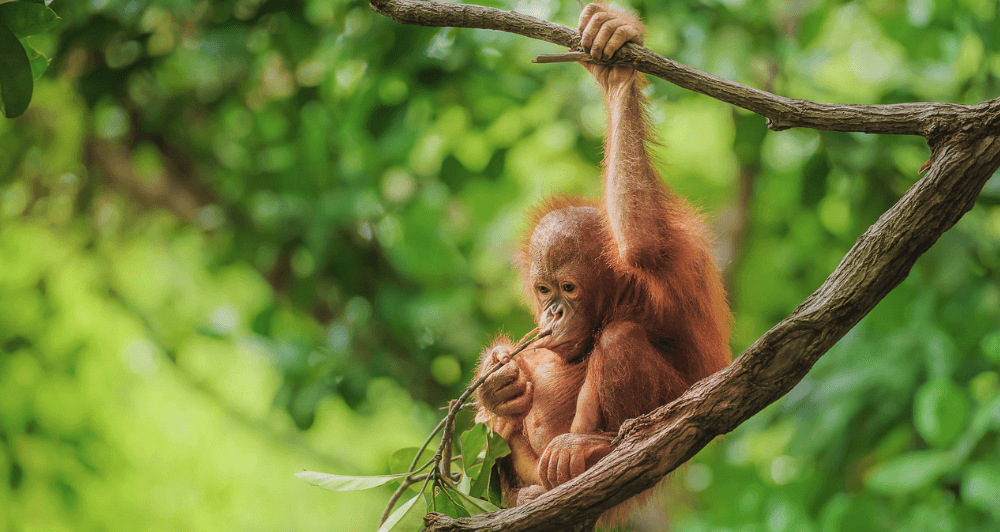
Conservation: Safeguarding a Wildlife Haven
The Kinabatangan Wildlife Sanctuary is a patch of protected land and the beating heart of Borneo’s legacy. Conservation efforts focus mainly on habitat preservation, anti-poaching patrols, and close collaboration with local communities. Sustainable tourism is central to the experience: every visitor who navigates these waters directly contributes to keeping the river and its creatures thriving for generations to come.
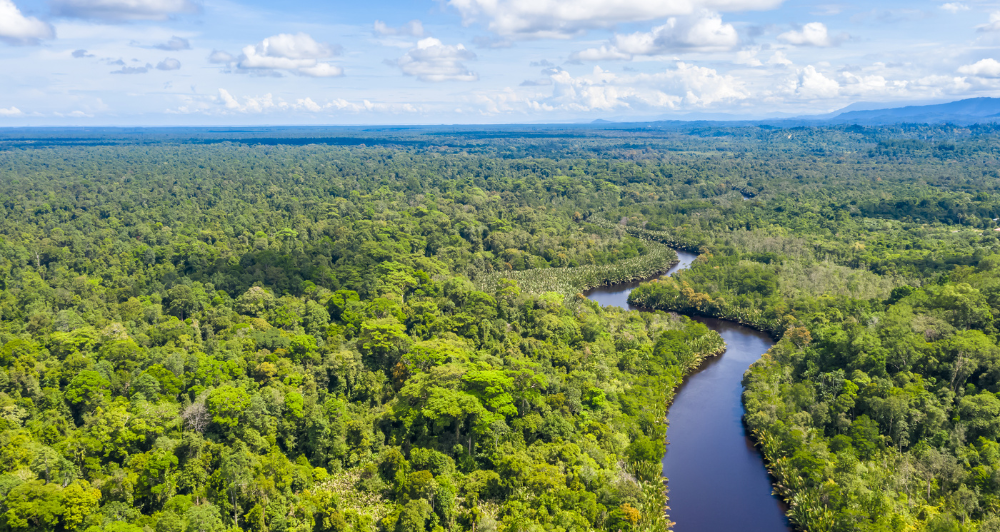
Wildlife on the Kinabatangan River Checklist
| Category | Species Examples |
| Mammals | Proboscis Monkey, Orangutan, Pygmy Elephant, Sun Bear, Clouded Leopard |
| Birds | Rhinoceros Hornbill, Oriental Pied Hornbill, Bornean Bristlehead, Kingfishers, Egrets |
| Reptiles | Saltwater Crocodile, Asian Water Monitor |
| Amphibians | Asian Common Toad, Crested Toad |
| Nocturnal Species | Slow Loris, Western Tarsier |
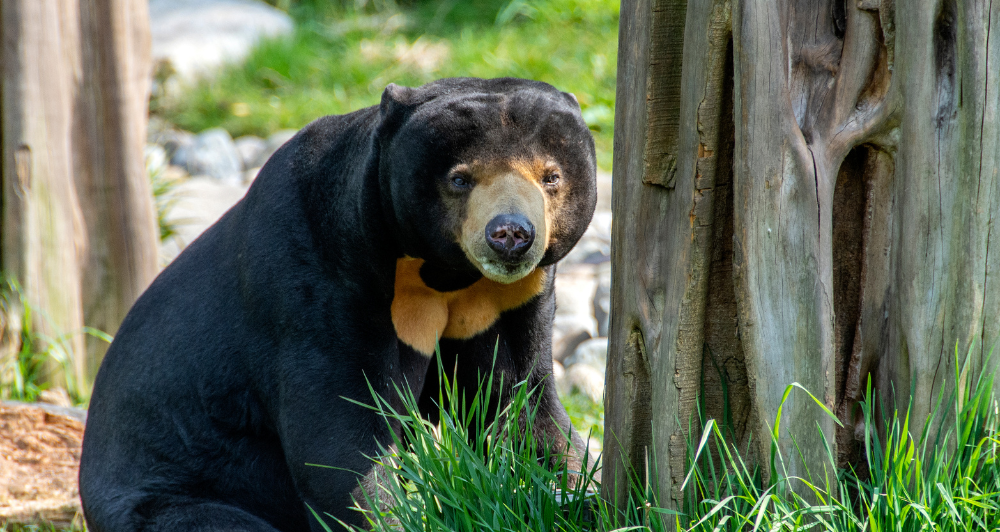
Ways to See Wildlife on the Kinabatangan River with Destinology
Devised by our experts who've travelled to Borneo and navigated this world-famous waterway, we have 3 itineraries that trace its currents through the country:
- Orangutans and Borneo Beach: an itinerary of beautiful contrasts, from the cityscape of Kota Kinabalu to the rich jungle of Sepilok Orangutan Sanctuary, a trip down the river, and a 4 night stay at a 5* Shangri-La property to round off your adventure.
- Borneo In Style: exploring the country in luxurious comfort, this itinerary visits Kota Kinabalu, Sandakan, the Kinabatangan River and Lahad Datu, with stays mostly taking place in 5* hotels.
- Hong Kong & Borneo: combining the iconic city of Hong Kong with the rich and abundant wildlife of Borneo, this 14-night trip promises incredible sights at every turn: Hong Kong harbour, jungle-covered hills, sandy beaches, and, of course, some orangutans.
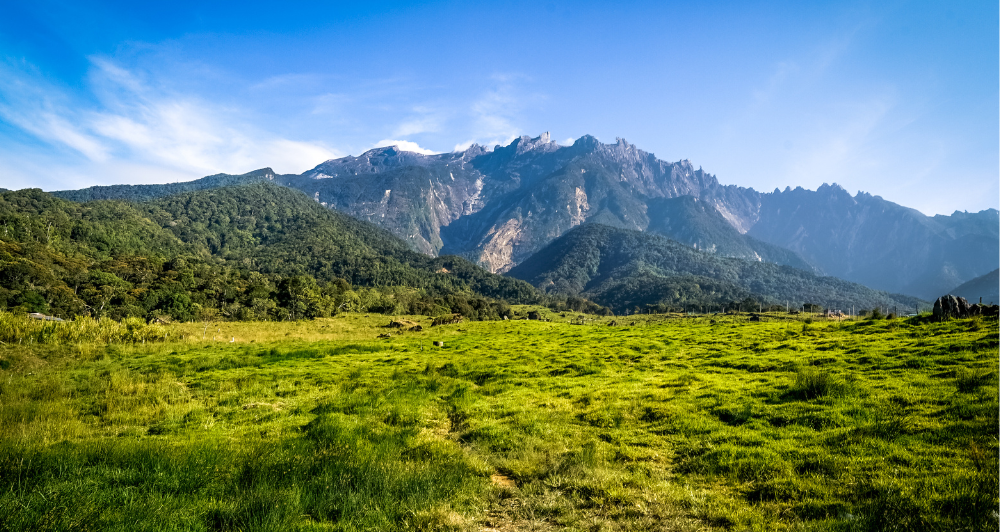
Cruising in search of wildlife on the Kinabatangan River is a real lesson in patience, observation, and wonder. Nothing is certain or guaranteed, but each bend holds the potential for a life-affirming sighting, whether it’s a mischievous monkey, a playful pygmy elephant, or the ghost-like flicker of a clouded leopard. Here, the forest and river play out a story of movement, sound, and instinct, and all must be considered when travelling the waterway looking for its rare inhabitants. For travellers with curiosity and a deep respect for the untamed side of Borneo, the Kinabatangan River provides an insider’s glimpse into the country at its most colourful, most intimate, and most breathtakingly alive.
View All of Our Malaysia Itineraries
FAQs
What wildlife can I see on the Kinabatangan River?
The Kinabatangan River is a haven for wildlife enthusiasts. Visitors often encounter the 'Borneo Big Five':
- Proboscis Monkeys: Endemic to Borneo, these monkeys are known for their distinctive large noses and pot-bellied appearance.
- Bornean Orangutans: These critically endangered primates are a rare but rewarding sight along the river.
- Borneo Pygmy Elephants: The smallest elephant subspecies, found roaming the riverbanks in small herds.
- Sun Bears: The world's smallest bear, often seen foraging for insects and fruit in the forest understory.
- Clouded Leopards: Elusive and nocturnal, these rare cats are a prized sighting for dedicated naturalists.
Additionally, over 250 bird species, including various hornbills and kingfishers, can be spotted along the riverbanks.
When is the best time to visit the Kinabatangan River?
The ideal time to visit is during the dry season, from March to October. This period offers more stable weather conditions, increasing the chances of wildlife sightings. However, the river's ecosystem is active year-round, and each season offers unique experiences.
How do I get to the Kinabatangan River?
The Kinabatangan River is accessible via Sandakan, a city in Sabah, Malaysia. From Sandakan, you can reach the river by road or boat depending on your chosen lodge. Our Tailor-Made Holiday itineraries include transportation from Sandakan, making the journey seamless.
Where should I stay along the Kinabatangan River?
There are several eco-lodges and resorts offering comfortable accommodations and guided wildlife tours. Our favourites are Sukau Rainforest Lodge - known for its luxury eco-friendly accommodations and proximity to wildlife hotspots - and Kinabatangan Wetlands Resort - a charming retreat sat in Lower Kinabatangan, surrounded by freshwater swamps and a mangrove forest.
What should I pack for a trip to the Kinabatangan River?
Packing appropriately is crucial for comfort and safety:
- Lightweight, quick-drying clothing, ideal for the humid climate.
- A waterproof jacket or poncho is essential, especially during the wet season.
- Insect repellent to protect against mosquitoes and other insects.
- Binoculars and a camera, for birdwatching and capturing wildlife shots.
- Sturdy footwear for jungle walks and boat excursions.
Are night safaris available on the Kinabatangan River?
Yes, night safaris are a highlight for many visitors. These trips are a chance to see nocturnal wildlife such as slow lorises, tarsiers, and various frog species as the jungle comes alive with sounds and movements. Get in touch if this is something you'd like to build your trip around.
How is conservation managed along the Kinabatangan River?
Conservation efforts are robust, focusing on habitat preservation, anti-poaching measures and community engagement. The Kinabatangan Wildlife Sanctuary plays a key role in such initiatives, ensuring the long-term survival of the region's biodiversity. Sustainable tourism practices also contribute to conservation, allowing visitors to experience the area's wonders while supporting its preservation.
How long should I spend on a Kinabatangan River tour?
All our of Tailor-Made Holidays that cover the Kinabatangan River feature 2 night stays there. This is ample time for river cruises, jungle walks, and wildlife viewing. If you'd prefer a slightly longer stay, we can of course accommodate this. Extending to 3 or 3 nights would allow for more in-depth exploration and increased chances of encountering diverse species.
Can I explore the Kinabatangan River independently?
While independent travel is technically possible, we highly recommended joining in with guided tours for safety and to enhance the wildlife viewing experience. Local guides have invaluable knowledge of the area and its inhabitants, which in turn increases the likelihood of sightings and gives you a deeper insight into the ecosystem.
